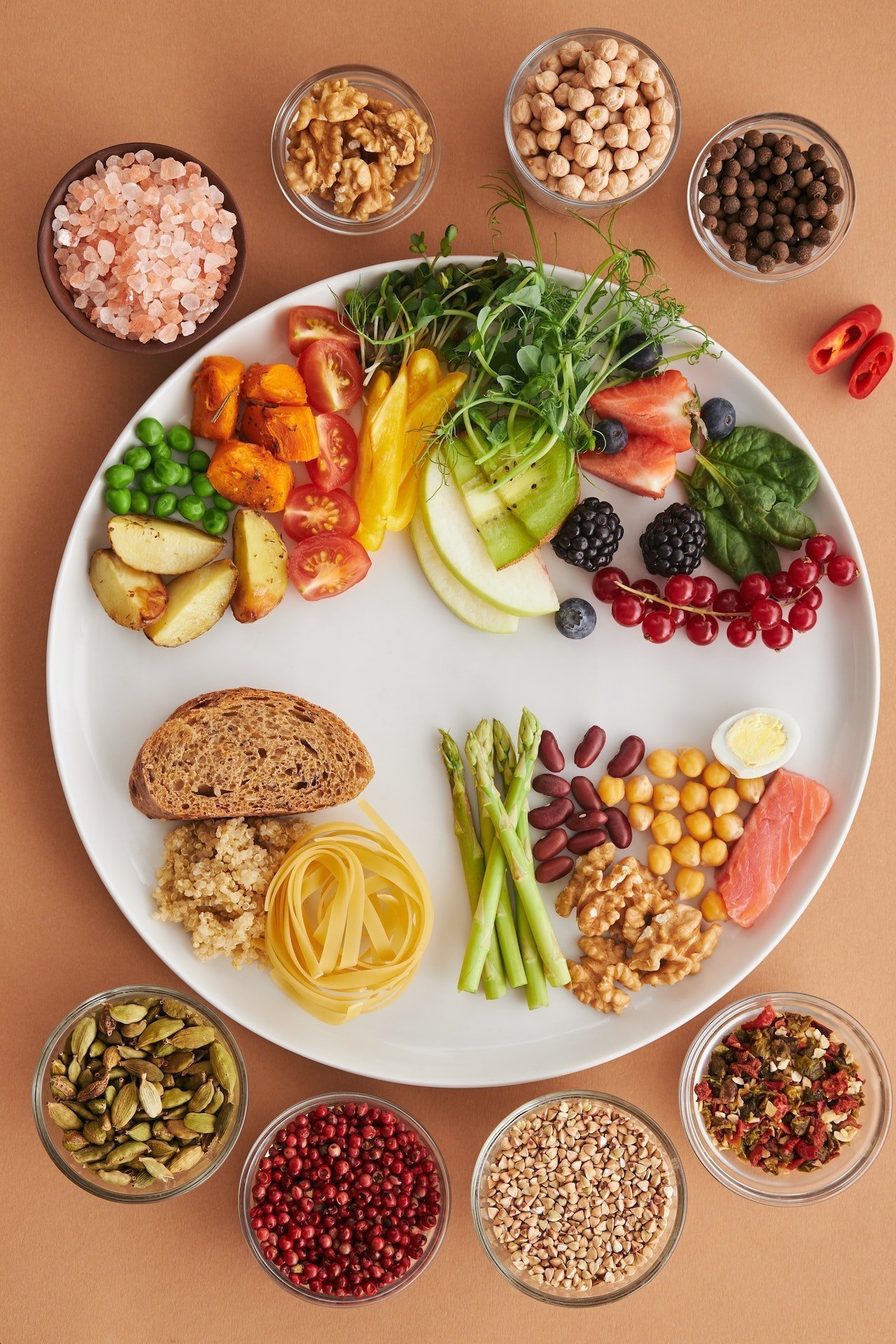What are the Benefits of Eating a Healthy Diet? How to Create a Healthy Meal Plan? 10 FAQs
Introduction: Maintaining a healthy diet is essential for our overall well-being and longevity. It involves consuming a variety of nutrient-rich foods that provide us with the necessary vitamins, minerals, and other compounds our bodies need to function optimally. In this article, we will explore the wide range of benefits associated with eating a healthy diet and provide practical tips to help you adopt and maintain nutritious eating habits.
Eating a healthy diet is a cornerstone of a vibrant and fulfilling life. The benefits of nourishing our bodies with wholesome foods are numerous and far-reaching. Not only does a healthy diet provide essential nutrients and fuel for optimal physical functioning, but it also plays a vital role in preventing chronic diseases, maintaining a healthy weight, and supporting mental well-being. In this article, we will explore the many benefits of eating a healthy diet, delve into the strategies for creating a personalized and sustainable meal plan, and address common questions that often arise when embarking on a journey toward better nutrition.
So, whether you’re seeking to enhance your overall health, manage your weight, or simply cultivate healthier eating habits, let’s delve into the world of nutritious and delicious possibilities.
1. What are some healthy options for eating out?
The Importance of a Healthy Diet
A healthy diet is of utmost importance for maintaining overall well-being and promoting optimal health. It provides the necessary nutrients, vitamins, and minerals that our bodies need to function properly.
A balanced diet consisting of a variety of fruits, vegetables, whole grains, lean proteins, and healthy fats can support our immune system, enhance energy levels, and contribute to a healthy weight. Moreover, a healthy diet plays a crucial role in preventing chronic diseases such as heart disease, diabetes, and certain types of cancer.
It supports brain function, improves digestion, and promotes a positive mood. By making conscious choices to prioritize nutritious foods, we can truly experience the transformative power of a healthy diet in our daily lives.
1. Reduces the Risk of Chronic Diseases
A healthy diet significantly lowers the risk of chronic diseases such as heart disease, diabetes, and certain types of cancer. By consuming a balanced and diverse array of foods, we provide our bodies with essential nutrients and antioxidants that protect against cellular damage and inflammation, two factors often linked to the development of chronic diseases.
2. Enhances Energy Levels
Proper nutrition fuels our bodies and boosts our energy levels. By consuming a combination of complex carbohydrates, lean proteins, and healthy fats, we provide our cells with a steady source of fuel. This helps prevent energy crashes and promotes sustained mental and physical performance throughout the day.
3. Supports Weight Management
A healthy diet plays a vital role in achieving and maintaining a healthy weight. By focusing on whole foods and portion control, we can create a calorie balance that supports weight loss or weight maintenance. Additionally, a diet rich in fiber and lean proteins promotes satiety and reduces cravings, making it easier to manage our food intake.
4. Promotes Mental Well-being
The food we eat also influences our mental health. Studies have shown that a nutrient-rich diet, particularly one high in omega-3 fatty acids, vitamins, and minerals, can reduce the risk of depression and anxiety. Eating a healthy diet nourishes our brain, improves cognitive function, and enhances our overall mood and well-being.
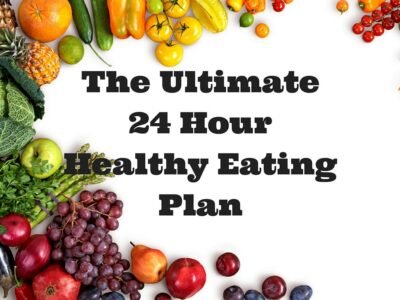
2. How to Create a Healthy Meal Plan?
Creating a healthy meal plan is the foundation of maintaining a nutritious diet. Here are some steps to help you develop an effective meal plan:
1. Set Realistic Goals
Begin by setting realistic goals that align with your lifestyle and dietary preferences. Consider your calorie needs, food preferences, and any specific dietary restrictions or allergies you may have. Having clear objectives will guide your meal planning process.
2. Include a Variety of Nutrient-Dense Foods
A healthy meal plan should include a diverse range of nutrient-dense foods. Incorporate whole grains, lean proteins, fruits, vegetables, and healthy fats into your meals. These foods provide essential nutrients and contribute to a well-rounded diet.
3. Prioritize Whole Grains, Fruits, and Vegetables
Whole grains, fruits, and vegetables should form the foundation of your meal plan. These foods are rich in fiber, vitamins, minerals, and antioxidants. Aim to consume a variety of colorful fruits and vegetables, as well as whole grains like brown rice, quinoa, and whole wheat bread. These foods provide essential nutrients and promote optimal health.
4. Balance Macronutrients
Ensure that your meal plan includes a balanced distribution of macronutrients. This means incorporating sources of carbohydrates, proteins, and fats in appropriate proportions. Opt for complex carbohydrates, such as whole grains and legumes, lean sources of protein like chicken, fish, tofu, or beans, and healthy fats from sources like avocados, nuts, and olive oil.
5. Plan Ahead and Meal Prep
To make healthy eating more convenient, take some time to plan your meals in advance. Create a weekly meal plan, make a grocery list, and dedicate a day to meal prepping. Preparing meals and snacks ahead of time saves you time and ensures that you have nutritious options readily available, reducing the likelihood of resorting to unhealthy choices.
3. Exploring Healthy Snack Options
Snacking can be an opportunity to nourish your body with healthy foods between meals. Here are some nutritious snack options to consider:
1. Nuts and Seeds
Nuts and seeds, such as almonds, walnuts, chia seeds, or pumpkin seeds, are packed with nutrients like healthy fats, protein, fiber, vitamins, and minerals. They make for a satisfying and nutritious snack that provides sustained energy.
2. Greek Yogurt with Berries
Greek yogurt is a great source of protein and probiotics, which promote gut health. Top it with fresh berries like blueberries or strawberries for added antioxidants and natural sweetness.
3. Hummus with Fresh Vegetables
Hummus, made from chickpeas, offers a good dose of plant-based protein and fiber. Pair it with colorful raw vegetables like carrot sticks, cucumber slices, or bell pepper strips for a crunchy and nutritious snack.
4. Homemade Energy Balls
Energy balls made with ingredients like oats, dates, nuts, and nut butter are delicious and energy-boosting snacks. They provide a combination of carbohydrates, healthy fats, and protein to keep you satisfied between meals.
5. Air-popped Popcorn
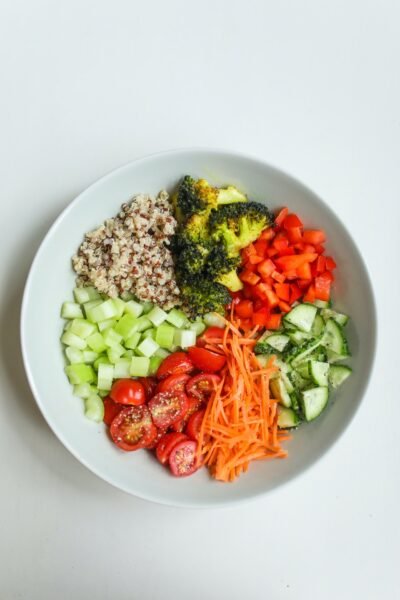
Air-popped popcorn is a light and low-calorie snack option that satisfies cravings for something crunchy. It is a whole-grain snack that can be enjoyed plain or with a sprinkle of herbs or spices for added flavor.
4. Making Healthy Eating Affordable
Eating a healthy diet doesn’t have to break the bank. Here are some tips to make healthy eating more affordable:
1. Plan Meals and Make a Grocery List
Plan your meals for the week and create a grocery list based on your meal plan. This helps you avoid impulsive purchases and ensures that you only buy the necessary ingredients. Stick to your list while shopping to stay within your budget.
2. Shop Seasonally and Locally
Seasonal produce is often more affordable and fresher than out-of-season options. Visit local farmers’ markets or consider joining a community-supported agriculture (CSA) program to access locally grown fruits and vegetables at reasonable prices.
3. Opt for Whole Foods
Processed and pre-packaged foods tend to be more expensive than whole foods. Opt for whole ingredients and prepare meals from scratch whenever possible. This not only saves money but also allows you to have control over the quality and nutritional content of your meals.
4. Cook at Home and Pack Lunches
Eating out frequently can quickly add up in expenses. By cooking meals at home and packing your lunch for work or school, you can save money and have better control over the ingredients and portion sizes of your meals.
5. Utilize Frozen Fruits and Vegetables
Frozen fruits and vegetables are a cost-effective and convenient option. They are often just as nutritious as fresh produce, and you can use them in smoothies, stir-fries, soups, and other dishes. Plus, they have a longer shelf life, reducing the chances of food waste.
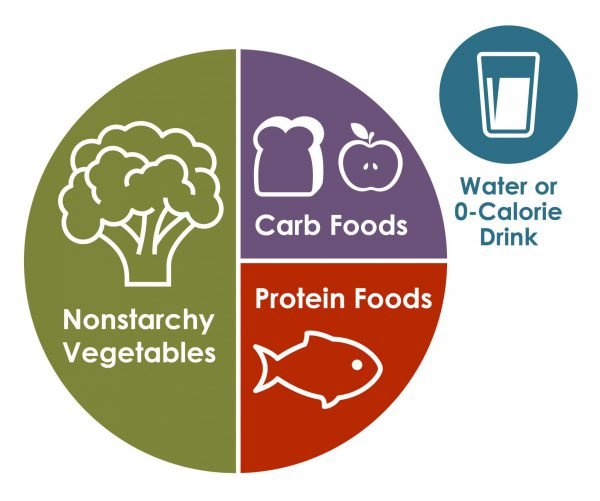
5. Making Healthy Eating Convenient
In our busy lives, convenience plays a significant role in our food choices. Here are some strategies to make healthy eating more convenient:
1. Meal Prepping and Batch Cooking
Spend some time each week to meal prep and batch cook. Prepare larger quantities of staple foods, such as grains, proteins, and roasted vegetables, and portion them into containers for easy grab-and-go meals throughout the week. This saves time and ensures that you always have healthy options available.
2. Using Time-Saving Appliances
Invest in time-saving kitchen appliances like slow cookers, instant pots, or air fryers. These appliances simplify the cooking process and reduce the time and effort required to prepare healthy meals. They allow you to set and forget, while still enjoying nutritious home-cooked meals.
3. Stocking Healthy Pantry Staples
Keep your pantry stocked with healthy staples like whole grains, canned beans, herbs and spices, nuts, and seeds. These ingredients can be the base for quick and nutritious meals when you’re short on time or ingredients.
4. Embracing Healthy On-the-Go Options
When you’re on the go, it’s important to have healthy options readily available. Pack portable snacks like cut-up fruits, trail mix, or homemade energy bars. Additionally, research and locate nearby restaurants or food establishments that offer nutritious choices for when you need to grab a meal on the go.
5. Having Healthy Snacks Ready
Prepare pre-portioned snacks and keep them easily accessible. This could include washed and cut fruits and vegetables, pre-packaged nuts or seeds, or individual servings of Greek yogurt. Having these snacks readily available will help you avoid reaching for unhealthy alternatives when hunger strikes.
6. Debunking Common Myths about Healthy Eating
Let’s address some common myths associated with healthy eating:
1. Myth: Healthy Food is Expensive
While some specialty health foods can be pricey, a healthy diet doesn’t have to be expensive. By prioritizing whole foods, seasonal produce, and home-cooked meals, you can create a nutritious diet that fits your budget.
2. Myth: Healthy Food is Bland and Boring
Healthy food can be delicious and exciting. Experiment with herbs, spices, and different cooking techniques to add flavor to your meals. Explore new recipes and try out different cuisines to keep your healthy eating journey interesting.
3. Myth: Healthy Eating Requires Strict Diets
Healthy eating is not about strict diets or extreme restrictions. It’s about making balanced and sustainable choices. Focus on incorporating a variety of nutrient-dense foods into your meals and finding a healthy eating pattern that works for you.
4. Myth: All Fats are Unhealthy
Not all fats are created equal. While saturated and trans fats should be limited, unsaturated fats, such as those found in avocados, nuts, and olive oil, are beneficial for your health. They provide essential fatty acids and support various bodily functions.
5. Myth: Skipping Meals Helps with Weight Loss
Skipping meals can lead to overeating later in the day and disrupt your metabolism. It’s important to fuel your body with regular and balanced meals to maintain stable energy levels and support weight management.
7. Exploring Healthy Options for Eating Out
Maintaining a healthy diet doesn’t mean you have to avoid eating out. Here are some healthy options to consider when dining out:
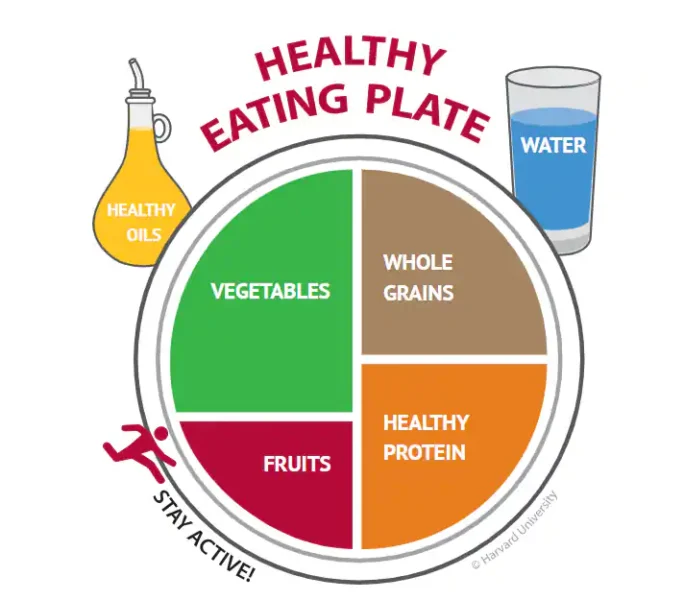
1. Choose Restaurants with Healthy Menu Options
Look for restaurants that offer a variety of healthy choices on their menu. Many restaurants now provide options for gluten-free, vegetarian, or vegan meals. Opt for dishes that are grilled, steamed, or roasted instead of fried or heavily sauced options.
2. Request Modifications to Your Meal
Don’t be afraid to ask for modifications to suit your dietary preferences or needs. Request items to be cooked with less oil, dressings or sauces on the side, or additional vegetables instead of starchy sides. Most restaurants are willing to accommodate these requests.
3. Fill Up on Vegetables and Salads
Start your meal with a salad or vegetable-based appetizer. This will help you increase your vegetable intake and feel more satisfied before the main course. Choose salads with a variety of colorful vegetables and opt for vinaigrette dressings instead of creamy dressings.
4. Opt for Lean Protein Sources
Choose lean protein options such as grilled chicken, fish, or tofu when selecting your main course. These options are lower in saturated fats and provide essential nutrients. Avoid breaded or deep-fried protein choices.
5. Be Mindful of Portion Sizes
Restaurant portions are often larger than what you would typically consume at home. Practice portion control by sharing meals with a friend or opting for smaller portion sizes. Consider taking leftovers home for another meal.
8. How can I stay motivated to eat a healthy diet?
To stay motivated, set realistic and achievable goals, find your personal reasons for wanting to adopt a healthy diet, surround yourself with support, track your progress, and reward yourself for sticking to your healthy eating habits.
Staying Motivated to Eat a Healthy Diet
Maintaining motivation is key to sticking to a healthy diet. Here are some strategies to stay motivated:
1. Set Realistic and Achievable Goals
Set specific, realistic, and achievable goals related to your healthy eating habits. Break them down into smaller milestones and celebrate your progress along the way. Having goals provides focus and keeps you motivated.
2. Find Your “Why“
Identify your personal reasons for wanting to adopt a healthy diet. Whether it’s to improve your overall health, have more energy, or feel confident in your body, understanding your “why” can serve as a powerful motivator when faced with challenges.
3. Surround Yourself with Support
Seek support from family, friends, or online communities who share similar health goals. Having a support system can provide encouragement, accountability, and motivation. Share your successes and challenges, and celebrate each other’s achievements.
4. Track Your Progress
Keep track of your dietary habits and progress to see how far you’ve come. Use a food diary or a mobile app to monitor your meals, snacks, and water intake. Seeing your progress can boost motivation and help you identify areas for improvement.
5. Reward Yourself
Reward yourself for sticking to your healthy eating habits. Treat yourself to non-food rewards such as a relaxing spa day, a new workout outfit, or a weekend getaway. Recognize your efforts and celebrate your commitment to a healthy lifestyle.
9. How can I ensure that I am getting all of the nutrients I need from my diet?
To ensure nutritional adequacy, eat a variety of foods from all food groups, pay attention to micronutrients, practice portion control, stay hydrated, and consider consulting a registered dietitian if needed.
Ensuring Nutritional Adequacy
To ensure you’re getting all the necessary nutrients from your diet, consider the following:
1. Eat a Variety of Foods
Aim for a diverse and balanced diet that includes foods from all food groups. This helps ensure you receive a wide range of nutrients necessary for optimal health. Include fruits, vegetables, whole grains, lean proteins, and healthy fats in your meals.
2. Pay Attention to Micronutrients
Be mindful of important micronutrients such as vitamins and minerals. Include foods rich in calcium, iron, vitamin D, B vitamins, and omega-3 fatty acids. If needed, consider incorporating supplements under the guidance of a healthcare professional to address any specific nutrient deficiencies.
3. Practice Portion Control
While it’s important to eat a variety of foods, it’s also crucial to practice portion control. Pay attention to your portion sizes to avoid overeating, which can lead to weight gain and imbalances in nutrient intake. Use measuring cups or your hand as a guide to estimate appropriate portion sizes.
4. Stay Hydrated
Water is essential for overall health and proper bodily functions. Stay hydrated by drinking an adequate amount of water throughout the day. Carry a reusable water bottle with you to remind yourself to stay hydrated.
5. Consider Consulting a Registered Dietitian
If you have specific dietary concerns, or health conditions, or are unsure if you’re meeting your nutritional needs, consider consulting a registered dietitian. They can provide personalized guidance and help you develop a meal plan that meets your unique requirements.
10. How can I overcome cravings for unhealthy foods?
To overcome cravings, identify triggers and patterns, find healthy alternatives, practice mindful eating, distract yourself with other activities, and practice moderation by allowing occasional indulgences.
Overcoming Cravings for Unhealthy Foods
Cravings for unhealthy foods can be a challenge when trying to maintain a healthy diet. Here are some strategies to overcome cravings:
1. Identify Triggers and Patterns
Pay attention to what triggers your cravings. Is it stress, boredom, or specific situations? Identifying the triggers and patterns can help you develop strategies to manage or avoid them.
2. Find Healthy Alternatives
Instead of giving in to unhealthy cravings, find healthier alternatives that satisfy your cravings. For example, if you crave something sweet, reach for a piece of fruit or a small portion of dark chocolate. If you crave salty snacks, opt for air-popped popcorn or roasted nuts.
3. Practice Mindful Eating
Engage in mindful eating by paying attention to your body’s hunger and fullness cues. Slow down while eating, savor each bite, and focus on the flavors and textures of the food. This can help you become more aware of your eating habits and make conscious choices.
4. Distract Yourself
When a craving strikes, try distracting yourself with an activity you enjoy or engaging in a different task. Go for a walk, read a book, call a friend, or engage in a hobby. By redirecting your attention, you can reduce the intensity of the craving.
5. Practice Moderation
Allow yourself to indulge in your favorite treats occasionally, but practice moderation. Instead of completely depriving yourself, enjoy small portions of your favorite unhealthy foods on special occasions. This can help you maintain a balanced approach to your diet.
Conclusion
Eating a healthy diet offers numerous benefits for your overall well-being. By following a balanced meal plan, incorporating nutritious snacks, being mindful of your choices, and overcoming challenges, you can create a sustainable and enjoyable approach to healthy eating. Remember, it’s a journey, and each positive choice you make contributes to a healthier and happier you.
FAQs (Frequently Asked Questions)
1. Can I still enjoy my favorite foods while eating a healthy diet?
Yes, you can still enjoy your favorite foods in moderation as part of a healthy diet. It’s all about balance and making conscious choices most of the time.
2. How long does it take to see results from eating a healthy diet?
The time it takes to see results can vary for each individual. However, you may start noticing positive changes in your energy levels, mood, and overall well-being within a few weeks of adopting a healthy eating plan.
3. Can a healthy diet help with weight loss?
Yes, a healthy diet can support weight loss when combined with regular physical activity. It focuses on nutrient-dense foods that promote satiety and provide the body with the necessary nutrients for optimal functioning.
4. Are there any specific foods I should include in a healthy diet?
A healthy diet should include a variety of nutrient-rich foods. Some examples include fruits, vegetables, whole grains, lean proteins, low-fat dairy or dairy alternatives, and healthy fats like avocados, nuts, and seeds. It’s important to choose whole foods and minimize processed or packaged foods that are high in added sugars, unhealthy fats, and sodium.
5. Can a healthy diet improve my energy levels?
Yes, a healthy diet can positively impact your energy levels. Nutrient-dense foods provide the necessary fuel for your body to function optimally. A balanced combination of carbohydrates, proteins, and healthy fats can help stabilize blood sugar levels and prevent energy crashes throughout the day.
6. Is it necessary to count calories on a healthy diet?
Counting calories is not always necessary for a healthy diet. Instead of focusing solely on calorie counting, it’s more beneficial to emphasize the quality of the foods you consume. Prioritizing whole, unprocessed foods and portion control can naturally support weight management and overall health.
7. Can a healthy diet prevent chronic diseases?
A healthy diet plays a significant role in reducing the risk of chronic diseases. Eating a variety of nutrient-dense foods can support heart health, improve blood sugar control, lower the risk of obesity, and contribute to overall longevity and well-being.
8. How can I make healthy eating a long-term habit?
Making healthy eating a long-term habit requires consistency and sustainable changes. Start by setting achievable goals, gradually incorporating healthier choices into your diet, and finding enjoyment in nutritious foods. Surround yourself with a supportive environment and practice self-compassion along the way.
9. Are there any specific dietary guidelines I should follow?
While there are general dietary guidelines, it’s important to remember that everyone’s nutritional needs may vary. Consulting with a registered dietitian can provide personalized recommendations based on your individual health goals, preferences, and any specific dietary requirements.
10. How can I create a healthy meal plan?
Creating a healthy meal plan involves incorporating a balance of fruits, vegetables, whole grains, lean proteins, and healthy fats. Consider portion sizes, meal frequency, and personal preferences. Plan your meals in advance, include a variety of nutrients, and consider meal prepping to make healthy eating more convenient.
For more information and tips on maintaining a healthy diet, Visit: optimalhealth. in.
https://www.cdc.gov/nutrition/resources-publications/benefits-of-healthy-eating.html
BABY HEALTHY FOODS | BREASTFEEDING | SOLID FOODS
https://www.who.int/news-room/fact-sheets/detail/healthy-diet

